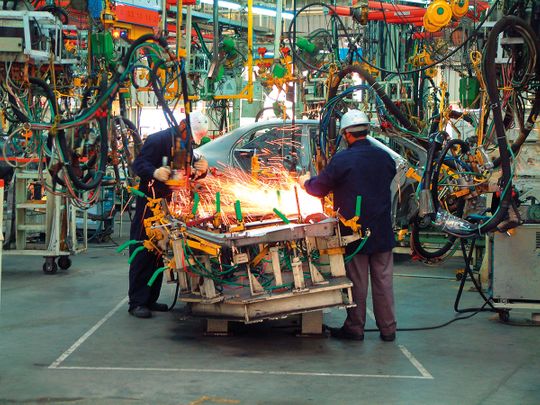
The year 2023 is a significant year for India. It marks the Indian presidency for the G20 and the Shanghai Cooperation Organisation (SCO). From the G20 perspective, the Indian presidency is crucial as it is in the middle of the troika from the global south, with Indonesia being its predecessor, and Brazil being its successor.
On the other hand, this also marks the year when India overtakes China to become the world’s most populous country in mid-January (India’s 1.417 billion versus China’s 1.412), according to World Population Review (WPR) estimates. This indeed creates an opportunity for India to convert this massive pool of human capital to a productive factor input in its avowed goal to achieve 5- and 10-trillion-dollar GDP. Despite a deteriorating global geopolitical and financial climate, fears of inflation and dip in forex and the demand slowdown, the World Bank has upgraded growth projections for India from 6.5 per cent to 6.9 per cent, citing the economy’s strong resilience to global shocks.

India has a significant role to play in reducing economic inequalities by converging the wedge between the rich and poor, as technology progresses in the largest democracy of the world
The pandemic and subsequent Ukraine-Russia war had three crucial lessons for the world economy. Firstly, the overdependence of the Global Value Chains, or GVCs on specific economies must be reduced, and should be diversified. This is because any type of shock emanating from those locations can have a cascading impact on the world economy.
Secondly, the contours of economic partnerships have changed. Countries now strive to strike the right balance between globalisation and localisation, through bilateral and multilateral platforms characterised by leveraging sub-regional comparative advantages. Thirdly, there is no doubt that the pandemic has provided an uptick in the use of technology - ranging from the provision of social security payments at the grassroots to government-level conferences.
The India story
From these three points emerge the Indian story that should be highlighted in the year of India’s G20 presidency. It all began with the Make in India initiative (MII), devised to transform India into a global design and manufacturing hub. Though MII might give the impression of an age-old import-substitution doctrine, on the contrary it is about creating enabling conditions for attracting foreign investment and corporations for setting up their business units in India.
At the same time, the sub-national federal state governments in India were also drawn in the race of projecting their state economies as attractive destinations for businesses to set up their units. In the process of promotion of this competitive federalism framework, the states are continuously bringing about substantial reforms in their practices and constantly evolving to reduce the transaction costs of doing business on the basis of the Business Reforms Action Plans, or BRAP parameters and those set up by the Department for Promotion of Industry & Internal Trade (DPIIT). This has led to development of industrial corridors, opening up of FDI-like defence manufacturing, railways, space, single brand retail, etc.
As such, India received the highest annual FDI in FY 21-22 at $84.835 billion. There is an expectation that in the forthcoming Union Budget 2022-23, there will be fiscal incentives for some of the MII sectors like the production of toys, bicycles and leather and footwear through extension of the Production Linked Incentive or PLI scheme that was introduced during the pandemic years. This is slated to provide more employment through incentivisation of the high-employment potential sectors.
How does India compare?
Over the last two to three decades, western companies invested in China due to their low production costs and enormous domestic consumer markets. Now, the scenario has changed: many western corporates have been thinking of a China+1 strategy, that entails diversifying business into other countries beyond China to reduce their concentrated risks. Here, India definitely has the potential to emerge as a viable alternative. There are at least seven counts where India scores over China.
First, India has a distinct advantage over China from the perspective of low-cost sourcing primarily due to lower labour and production costs.
Second, continued heavy government investment in physical infrastructure is expected to cut transportation time and also costs by 20 per cent in India. However, for China, it has often been allegedly stated that pick-up, over-the-road transport and final delivery are rarely done by the same company, thereby making tracking of shipments difficult at times.
Third, it is the comparative demographic dividend that will work in favour of India. While more than 52 per cent of India’s population is less than 30, the corresponding figure for China stands at around 40 per cent, which will tail off in the next 10 years, while youth in India will promote savings and consumption growth. Along with high internet penetration at 43 per cent, India is well placed to adequately provide digital skilling to its young human capital base, in order to leverage the contemporary forms of the industrial revolution that it had missed out in the era of colonisation. The neoclassical, as well as endogenous growth theories point to variations in technology levels as the cause behind poverty in developing countries.
Hence, India has a significant role to play in reducing economic inequalities by converging the wedge between the rich and poor, as technology progresses in the largest democracy of the world.
Fourth, tariffs on many Chinese products have been steadily increasing, which gives India an advantage in this area. Tariffs have increased by as much as 25 per cent on steel products.
Fifth, India’s labour costs and wages are much more competitive as compared to China. Chinese wages were $1,197.32 per month in 2019 while India’s were estimated at $147.46 per month. More specifically, the average cost of manufacturing labour per hour was four times in China as compared to India as estimated for 2014.
Sixth, it is the English language skill that sets India ahead of China. English is the second official language in India and executives often use it to conduct business, making communication easier for US and many European clients.
Seventh, recent policy interventions indicate that India is ready to grasp the opportunity created by the China+1 strategy followed by many corporates. The Production Linked Incentive, or PLI scheme, liberalisation of the foreign direct investment policies particularly in manufacturing and reform of labour and taxation regimes, have created a conducive policy environment for businesses to flourish, generate employment, and boost the investment climate in the economy.
India has steadily grown to counter China by bringing more investments through policies such as setting up land pools and industrial townships in Karnataka and Telangana, executing tax incentives and fast-track clearance in Andhra Pradesh and Tamil Nadu, allowing a 100 per cent FDI under the automatic route, and slashing corporate tax rates for new manufacturing companies, among others.
Besides, Indian diplomacy is playing an extremely crucial role by responding to an increasingly dynamic world order. Partnerships such as the QUAD and I2U2, trade agreements with Australia, the UAE, UK, Canada and the EU, and enhanced outreach in Africa have provided Indian business access to finance, technology, and markets.
The roaring tiger
Many apprehended that India’s decision to not join the world’s largest trading bloc – the Regional Comprehensive Economic Partnership, or RCEP in 2020 to protect the domestic market and curb trade deficits was a lost opportunity in getting integrated with the broader MSME value chain of the ASEAN. However, there are substantial measures taken on various counts to counteract for that perceived “lost opportunity”.
Steering the G20, which comprises approximately 90 per cent of the global GDP, is a uniquely sticky position, but the Indian leadership couldn’t have been at the helm at a better time, when the world needs it the most as one of the strongest voices for the Global South. It is clear that India is the new roaring tiger of the world economic bloc, and prepared to emerge as an important cog in creating a new order from within the pandemonium that the world has been hurled into.
— The writer is Director, Observer Research Foundation (ORF), an independent India-based think tank, and Director, Think20 India Secretariat, the official engagement group for G20. The article is co-authored by Soumya Bhowmick, Associate Fellow, ORF













